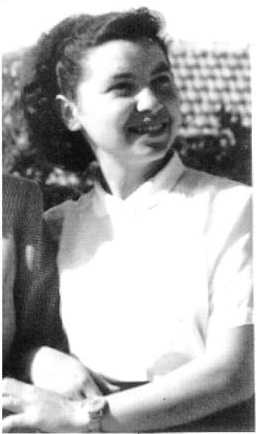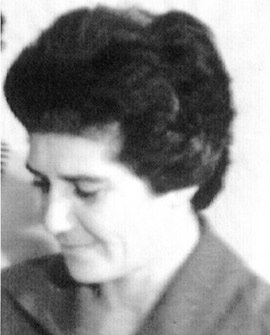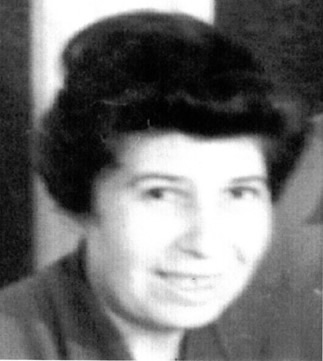| 21. Ruhama | ||||
|
We spent Saturday aboard; only the Orthodox passengers debarked on Friday. Meanwhile, it was a special experience hearing the workers of the port, the carriers, routers and sailors speaking, joking, getting orders and even quarreling inHebrew. It was the export season for citrus fruits, and enormous stacks of fruitboxes awaited be lifting by the gigantic cranes for storage in the freighters anchored there. The carriers brought us full boxes of fruit and recommended tasting Eretz Yisraeli eshkoliyot (grapefruit) we had not known until then. We also tasted, for the first time, green and black olives they had brought us. We debarked Sunday, October 29, 1945, and were directed into a big shed, where the representatives of Sohnut Yehudit, the Jewish Agency, welcomed us as the first Aliyah (immigrants) of Holocaust survivors from liberated Europe. They invited us to help ourselves from a long, neatly covered table laden with fruits, cookies and soft drinks. Then we had to register and get Identification Cards. We had no passports; our only personal document was the Certificate we had received in Bucharest. Dov Goldstein, who was a representative of the Kibbutz Artzi, the central organization of all kibbutzim belonging to the movement of Hashomer Hatzair, became our guide. He spoke Hebrew and Yiddish, and I had to translate his words to our group, being the only one speaking Hebrew. While we were having lunch in a nearby restaurant, he gave us a short description of the social structure of the kibbutzim and about the destination of our group. Those groups of youngsters, who had intended to join existing Kibbutzim, or, later to establish a new one had to spend a period of preparation in an older, established Kibbutz as a Gar’in (kernel) to become accustomed to kibbutzi life. Our group became such a Gar’in, and we were going to spend our preparation year in the southern Kibbutz Ruhama. He informed us that the Hungarian Gar’in from Switzerland had arrived about a month earlier and was sent to Kibbutz Negba, not far from Ruhama. Our two Gar’inim were going to unite and establish a new, independent Kibbutz. A northern Kibbutz established by pioneers from Czechoslovakia, Kfar Masaryk (Masaryk Village, named after the founder and first president of that republic), had invited us to spend our first night as their guests. Many members of that Kibbutz spoke Hungarian and were eager to hear about the events that had occurred in Hungary during the Holocaust. |
||||
|
||||
|
On descending from the bus, we were surprised to have our sisters we had not seen over a year and a half welcome us with happy, joyful cries. We met Shosha, Haya’s sister, and my sisters, Frida and Rózsi-Tzivon, who had arrived a month earlier from Switzerland. We wanted to hear everything about their experiences, and they—about our survival. I learned that our brother Ernő-Yehuda had temporarily remained in Switzerland to take part in the local Movement. Our sister Sara and her husband, Yasha, had to stay home in Kibbutz Negba and could not join our happy reunion, because they had to take care of their baby, born in Switzerland. There was no end to the stories we had to leave much for future meetings. We ate supper with the kibbutz members, after which our Gar’in was invited to a festive welcome party in our honor. A kibbutz representative welcomed us warmly as the first immigrants from Europe after the Holocaust. Many members had left families there and were still bewailing their tragic fate. He invited a representative of the Gar’in to relate what had happened to Hungarian Jewry, and what we had gone through during those months of raving Hell. It had to be told in Hebrew for the benefit of those who did not speak Hungarian and that meant that it was my task. I thanked all the members of the kibbutz for their cordial welcome and hospitality and then described the events before and after the German occupation; the drastic and cruel decrees against Jews; their dispossession of property of all kinds, of civil rights and human dignity; and lastly, the worst of all, their ghettoization and deportation to concentration and extermination camps. This was the fate of nearly half a million Hungarian Jews. I told about the unbelievable activity of the underground Zionist youth movements; their self-sacrifice and heroism in efforts to save Jewish lives; and the document forging “industry”, which saved tens of thousands of Jewish lives in Hungary, mainly in Budapest. I emphasized the chaotic situation during the last months, when the Szálassy regime freed criminals from prisons, encouraging them to hunt, catch and murder Jews. Thousands of Jews had been captured all over town, marched to the banks of the Danube and machine-gunned; Jewish blood had reddened the “Blue Danube”. The audience was listening intensely, only stifled sobs broke the silence. In the morning we started our journey to our destination, Kibbutz Ruhama. Dov Goldstein sat beside me on the bus all the way to Tel Aviv, where we had lunch in one of the restaurants the kibbutz activists frequented, and farther on to Rehovot. He explained the landscape we were passing through and gave me much information about life in Eretz Yisrael in general, and in the kibbutzim in particular. I learned much about our new country during this journey. We met Yashka Efrat, the secretary of Kibbutz Ruhama, in Rehovot. Situated about 15-18 miles south of Tel Aviv, Rehavot was at time the administrative, commercial and public transportation center of the southern settlements. Our new guide, Yashka, invited us to mount the open lorry of the kibbutz, which was to take us to Ruhama, since this was the only means of transportation to this southern outpost settlement. Dov bade us good-bye and left us in the care of Yashka, who seemed kind. I had to take up again my role of translator and relay
to my friends what I heard from him: At a certain point our lorry turned east, leaving the paved asphalt road and continuing on a dirt road, where it raised a cloud of white dust. After a short stretch, this fine, penetrating dust covered all of us and, on arriving in the kibbutz after many pleasures of bumps and potholes, we were looking like a school if of millers. The dust found its way into our mouths, crunched between our teeth, filled our nostrils, and even turned our eyelashes white. Yashka explained that Ruhama members were pioneers “paving the way” for more settlements in that region, and they hoped that the “settling authorities” would see to it that the road be paved within a short while. We arrived in he kibbutz late afternoon. Its festive party for our Gar’in the following evening was similar to that we had enjoyed in Kfar Masaryk two days before. Yashka welcomed us and emphasized the fact that we were the first group from post-Holocaust Europe and the first group hosted by their relatively young kibbutz. After sketching the history of the kibbutz, he declared that everybody was eager to hear about the tragic events we had experienced and the history of the Movement during those terrible and fateful months. He finished by promising that the kibbutz would spare no efforts to help us in our adaptation process. I repeated, more or less, what I had told at our first welcome party in Kfar Masaryk, and expressed my hope that our adaptation would be smooth with the help of Ruhama to the benefit of all. Our hosts were shocked and deeply moved by the story I had told, both about the Jewish tragedy and the heroism of our resistance and rescue movement. The next day we started our integration into the different “branches” of kibbutzi production and services. I owe a short explanation of the kibbutz idea for the reader who is unfamiliar with Israeli society. A kibbutz is a voluntary group of some hundreds of members, based on communal principles, where “every member contributes according to his abilities and receives according to his needs”. The means of production are common property. “Needs” include housing, food, clothing, education, culture and hobbies. The level of their availability depends on the economic potential of each kibbutz. The kibbutz conducts its life within the framework of a yearly budget, based on estimated income and expenses, like every economic society. The kibbutz itself is the actualization of all Zionist youth movements that prepare their members for this idea and lifestyle. As I mentioned Ruhama was a “young” kibbutz; its economic situation was still at an early stage and its standard of living accordingly rather modest. This fact influenced every aspect of our lives, like the conditions of housing, sanitation and, of course, our daily menu. Gar’in groups like ours, which came to existing kibbutzim for a preparation period, (generally one year), were working only five days weekly and had Fridays free for learning. We had lectures about everything that could be necessary and useful for our future kibbutz life, including naturally the Hebrew language. I learned many useful and interesting things from these lectures during these “days of study.” Ruhama maintained a combined workshop on the roadside near the villages of Kfar Warburg and Beer Tuvya. It consisted of a wheelwright and a locksmith shop. The place serviced the agricultural machinery of the surrounding villages. It also manufactured wooden wheels for the villagers’ farm carts. The wheelwrights produced the wooden wheel and we, the locksmiths, dressed them with steel hoops. I worked there from Sunday through Thursday. The lorry of the kibbutz took me home on Thursday evenings, on its way back from Tel Aviv, so that I could participate in the day of study on Friday. One of these trips home was after some rainy days. On such occasions our dirt road used to turn into a pond of sticky mud, and the lorry had to be replaced by a special farm cart drawn by a caterpillar tractor, so it would not become stuck in the deep mud. Haya got up before dawn and was on her way to the kitchen to prepare a warm drink and sandwiches for people going to work. Suddenly I was awakened by her crying and calling for help. When I found her in the pitch darkness, I realized, to my astonishment that she was stuck in the mud up to her ankles, unable to move a leg. I had to work hard to lift her out of her “sticky” captivity. We went back to our room, where she tried to get ready for her job again. While doing so, she complained smiling: Why have you brought me to this village?” I asked her in return: “Where do you see any village here?” We both started laughing heartily, and this funny dialogue remained with us for a long time. Of course, there were still neither paved sidewalks in the kibbutz nor paved driveway from the highway to the kibbutz. Haya’s first job in the kibbutz was in the laundry. Washing machines were still out of the question, and she had to do all that hard work with her delicate hands. Since she was very conscientious, she did her job thoroughly, for nine hours a day, and never uttered a word of complaint. The physical hardships never beclouded our love and happiness. Once, in a humorous mood, I told her that I had “fulfilled my promise” to my future mother-in-law when I told her that our dear Ilonka would learn how to work, and so she did. About two months after our arrival, our Gar’in prepared an entertainment program for the Chanukah party of the kibbutz. The main subject was an allegory about the Holocaust, in Hebrew of course. We were eager to show our hosts how much we had learned during these two months. At the end the kibbutzi audience rewarded us with warm applause. One morning of early summer we awoke to a surprising sight: British armored cars full of red-bereted parachutists (nicknamed Calaniyot, Wing flowers, which they hated) were swarming all about the kibbutz, looking for hidden weapons and hidden Haganah members (Jewish militants, at that time illegitimate in the Mandate). Nobody was permitted to leave their rooms, not to mention the entire kibbutz premises. It took long negotiations to get their permission to distribute food to the rooms, to milk and feed the cows and to look after the poultry. They searched every room; they even tore open the flooring in the new dining room still under construction. At last, after a full week of feverish foraging, they left empty-handed, having missed the plentiful slik (hideaway of illegitimate weapons belonging to the Haganah), buried outside the fence of the kibbutz courtyard, as well as the course for platoon-commanders of Palmach (Storm Troopers of the Haganah). These young militants had intermingled with us and “dissolved” among the civilian kibbutz members. I dare say that we had been sheltering the cradle of the future Israeli General Staff, statesmen and outstanding political leaders. |
||||


